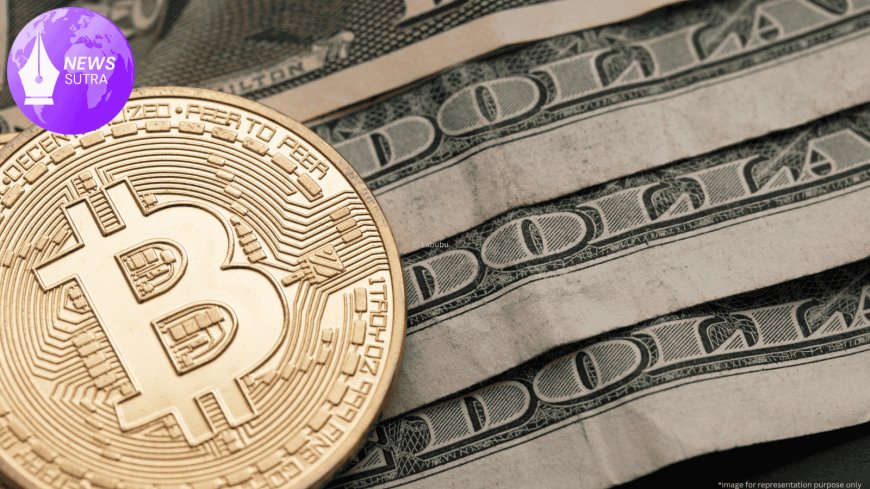Bitcoin in Your 401(k)? President Trump’s Executive Order Could Change U.S. Retirement Investing Forever
President Trump’s new executive order could allow U.S. 401(k) retirement plans to include Bitcoin. Learn how this policy could reshape retirement investing.

In a historic policy shift that could redefine retirement investing in America, President Donald Trump has signed an executive order paving the way for 401(k) retirement plans to include Bitcoin as an approved investment option. This groundbreaking move, which blends traditional retirement savings with the rapidly growing world of digital assets, has sparked excitement among crypto enthusiasts and stirred debate among financial experts.
If implemented, millions of U.S. workers could soon diversify their retirement portfolios beyond stocks, bonds, and mutual funds, potentially adding Bitcoin to their nest eggs.
What the Executive Order Says
The new directive, issued earlier this week, instructs the U.S. Department of Labor (DOL) to update retirement plan guidelines, allowing fiduciaries to offer cryptocurrency — specifically Bitcoin — as an eligible investment class in tax-advantaged retirement accounts like 401(k)s.
Until now, the DOL has taken a cautious stance toward cryptocurrencies in retirement plans, citing volatility and lack of regulation. But the administration argues that innovation and financial freedom should extend to how Americans save for their futures.
"American workers should have the right to decide where their retirement savings go — including emerging asset classes like Bitcoin," President Trump stated during a press briefing.
Why This Move is Historic
Cryptocurrency has long been viewed as a speculative asset, often compared to gold in its potential as a hedge against inflation. However, its entrance into the U.S. retirement system marks a turning point in mainstream adoption.
The potential benefits are significant:
-
Diversification: Bitcoin’s price movements are not directly correlated with traditional markets, potentially offering protection during stock market downturns.
-
Inflation Hedge: With inflation hitting multi-decade highs, many investors see Bitcoin as a store of value similar to precious metals.
-
Growth Potential: Bitcoin has been the best-performing asset of the past decade, despite its volatility.
The Risks for Retirement Investors
While the executive order opens new doors, it also raises serious questions about risk management. Bitcoin is known for dramatic price swings — losing or gaining double-digit percentages in a matter of days.
Financial experts caution that retirement accounts are designed for long-term stability, and including high-volatility assets could jeopardize that security.
"While innovation is important, fiduciaries have a responsibility to ensure investment choices align with the long-term interests of participants," said Fidelity Investments, one of the nation’s largest retirement plan administrators.
How This Could Work in Practice
If the policy is implemented, plan sponsors could partner with digital asset custodians to make Bitcoin available as part of a self-directed investment menu within 401(k)s.
For example:
-
A plan might allow participants to allocate up to 5% of their contributions toward Bitcoin.
-
Investments would likely be held in secure, regulated custody accounts.
-
Bitcoin exposure could be offered through spot holdings, exchange-traded funds (ETFs), or trust products such as the Grayscale Bitcoin Trust.
The DOL would also issue investor education requirements, ensuring workers understand cryptocurrency risks before opting in.
Industry Reactions: A Divided Landscape
The financial industry’s reaction has been sharply divided.
Supporters argue that the executive order modernizes retirement savings and reflects the growing acceptance of Bitcoin by institutional investors. They point to major corporations, hedge funds, and even countries adopting cryptocurrency as part of their financial strategy.
"This is a game-changer," said a spokesperson from Coinbase Institutional. "Giving Americans the ability to hold Bitcoin in their 401(k)s democratizes access to a transformative asset class."
Critics, however, warn that market volatility, regulatory uncertainty, and security risks could lead to disastrous outcomes for retirees who lack experience with cryptocurrency.
What It Means for the U.S. Economy
Allowing Bitcoin in retirement accounts could boost overall demand for the cryptocurrency, potentially driving prices higher in the short term.
It may also:
-
Increase institutional investment as retirement funds allocate to Bitcoin.
-
Encourage more crypto regulation, since retirement accounts require strict compliance measures.
-
Spur innovation in blockchain-based financial products.
Economists note that this could mark the first major integration of blockchain assets into the U.S. financial system at a retirement scale.
Investor Tips: Preparing for the Change
For workers considering Bitcoin in their 401(k), financial planners recommend:
-
Start Small: Allocate a small portion of your portfolio to Bitcoin to manage risk.
-
Understand Volatility: Expect significant price fluctuations and plan for a long-term hold.
-
Stay Informed: Follow updates from the Department of Labor and your retirement plan provider.
-
Consider ETFs or Trusts: For less risk than direct Bitcoin holdings, opt for regulated investment vehicles.
The Road Ahead: Implementation and Challenges
While the executive order is a major policy announcement, implementation is not immediate. The DOL must:
-
Update regulatory guidance.
-
Approve custodial arrangements for digital assets.
-
Develop investor education frameworks.
It could take 6–12 months before workers see Bitcoin as an option in their retirement plans.
Final Thoughts
President Trump’s decision to push Bitcoin into the U.S. retirement savings system is one of the boldest financial policy moves in recent history. Whether it proves to be a visionary step toward financial innovation or a risky gamble for America’s retirees will depend on market behavior, regulatory safeguards, and investor education.
For now, one thing is clear: The line between traditional finance and digital assets is rapidly disappearing — and retirement investing may never be the same again.











